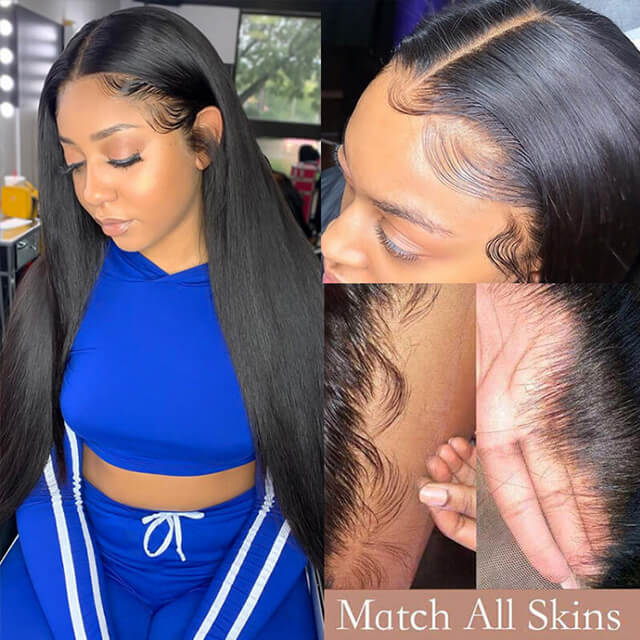Introduction:
Frontal wigs are a fantastic way to achieve a natural hairline and versatile styling options. While many people opt for gluing their frontal wigs in place, there are alternatives for those who prefer not to use adhesive. In this comprehensive guide, we will walk you through the steps to install a frontal wig without glue, allowing you to enjoy a secure and comfortable fit.
5 Steps to Install a Frontal Wig without Glue
Chapter 1: Preparing Your Frontal Wig
Before you begin the installation process, it's essential to prepare your frontal wig and gather the necessary tools:
Frontal Wig: Ensure your wig is clean and free from any excess product buildup.
Wig Cap: A wig cap will help secure your natural hair and provide a smooth base for your wig.
Bobby Pins or Clips: These will be used to secure your wig in place.
Wig Adjustable Straps: If your wig has adjustable straps, make sure they are properly adjusted to your head size.
Chapter 2: Preparing Your Natural Hair
Properly preparing your natural hair is crucial for a seamless installation:
Cornrows or Braid Your Hair: Create flat cornrows or braids close to your scalp to ensure an even surface for the wig to sit on. This step also helps protect your natural hair.
Secure the Ends: Use hairpins or clips to secure the ends of your braids or cornrows.
Chapter 3: Installing Your Frontal Wig
Now, let's proceed with the installation:
Put on the Wig Cap: Place the wig cap over your cornrows or braids. Ensure it's snug and secure.
Position the Frontal Wig: Carefully place the frontal wig on your head, starting from the front and working your way back. Make sure the wig's hairline aligns with your natural hairline.
Adjust the Straps: If your wig has adjustable straps, tighten or loosen them to achieve a comfortable fit. This step is essential for security.
Secure with Bobby Pins or Clips: Use bobby pins or clips to secure the wig in place. Insert them through the wig cap and into your braids or cornrows for added stability.
Chapter 4: Styling Your Frontal Wig
Once your wig is securely in place, you can style it to your liking:
Trim and Style: Trim any excess lace from the frontal if necessary. Then, style the hair as desired. You can straighten, curl, or braid the hair to achieve your preferred look.
Baby Hair: If your wig has baby hair, you can use edge control or gel to style it for a natural appearance.
Chapter 5: Maintenance and Removal
To maintain your frontal wig and safely remove it:
Daily Maintenance: Gently brush or comb your wig daily to prevent tangles and maintain its appearance.
Regular Cleaning: Depending on usage, wash your wig every 1-2 weeks with a mild shampoo and conditioner. Allow it to air dry on a wig stand to preserve its shape.
Safe Removal: To remove the wig, carefully unclip or unbobby pin it. Start from the back and work your way to the front, taking your time to avoid any pulling. Store your wig on a wig stand when not in use to maintain its shape.
Conclusion
Installing a frontal wig without glue can provide a secure and comfortable fit while protecting your natural hair. With proper preparation and careful installation, you can enjoy the beauty and versatility of a frontal wig without the need for adhesive. Remember to maintain and care for your wig to ensure it stays in excellent condition for a long time to come.
